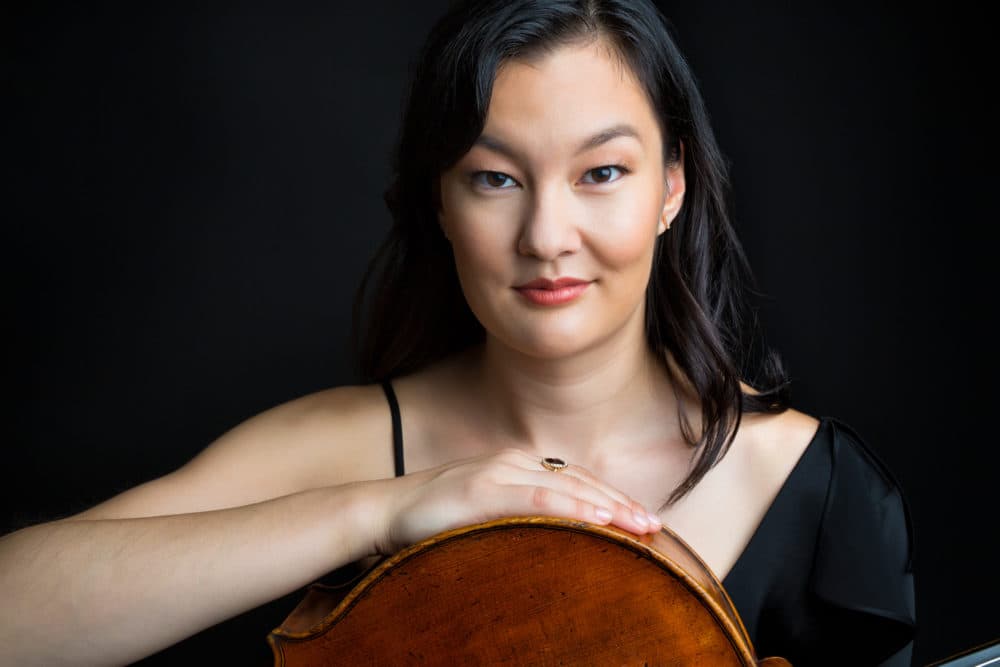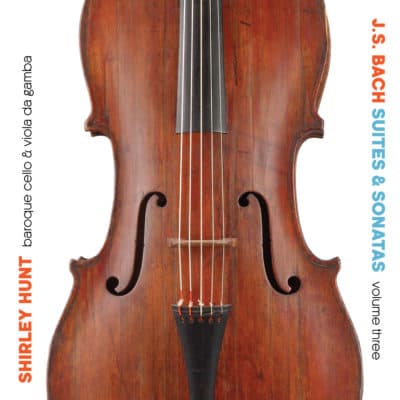Advertisement
She Needed A 300-Year-Old 5-String Cello. Luckily The MFA Has One
Resume
Back in 2017, the Museum of Fine Arts Boston hired Shirley Hunt to play a special centennial event to commemorate a large donation of historical instruments by a museum trustee. Hunt, a Boston-based musician who specializes in Baroque cello performance, was brought on to play a rare 18th-century five-string cello created by the Belgian luthier Marcus Snoeck.
At the time, Hunt was already at work on a project to record J.S. Bach’s complete solo cello suites and viola da gamba sonatas. Her visits to the museum to rehearse on the Snoeck cello got her thinking.
“One of the suites I [needed] to record by Bach calls specifically for a five-string cello,” she says. “I thought, like, well, I don't own a five-string cello. … But I [wondered] if the MFA would be open to my proposing something to them.”

This month, Hunt released the third and final volume in her Bach project, “J.S. Bach Suites & Sonatas, Vol. 3.” The album opens with Bach’s “Suite for Solo Cello No. 6 in D Major”: the first ever studio recording of the 300-year-old Snoeck cello.
To prepare for the recording, Hunt visited the MFA almost daily for about six weeks to practice on the instrument.
“It's very big,” she says. “I remember going to the museum and playing it and thinking, ‘Gosh, my hips are kind of sore. I better go to that yoga class later.’ ”
The cello’s fifth string is a high E, which makes it ideal for some of the more technical upper-register passages in Suite No. 6. “It is wonderful because it has such a soaring, big sound,” Hunt says. “The upper register of this cello, it's very sweet and very singing.”
Hunt specializes in historically-informed performance, an approach that aims to approximate the style and techniques popular during the time in which a work was composed. She is equally at home on Baroque cello and viola da gamba, a fretted cousin to the cello with six strings that was popular in Bach’s time. Each volume in Hunt’s Bach project features two solo cello suites and one gamba sonata, a pairing she hopes will showcase her skills on each instrument as well as the commonalities between them.

Still, tackling the Bach cello suites is no easy task. “The Bach suites for solo cello are such a special set of compositions, and I think that people are really drawn to the humanity,” she says. “Some of the movements are more extroverted. They're more athletic, they're more abundantly joyful. Some of them are extremely sad and extremely introspective.”
Hunt says, “I think it's really challenging to make these suites your own as a performer when they've been so recorded, and so performed, so thought about and written about over many centuries.”
“But I love the challenge of finding something that's unique that you have to say with them,” she continues. “I also really feel like I want someone who's searching for a recording … to have the chance to choose a recording by a woman, or choose a recording by a local Bostonian, or choose a recording by someone who's not already a super famous star.”
She laughs. “That's not me. I'm your local girl here in Boston.”
This segment aired on November 2, 2020.
